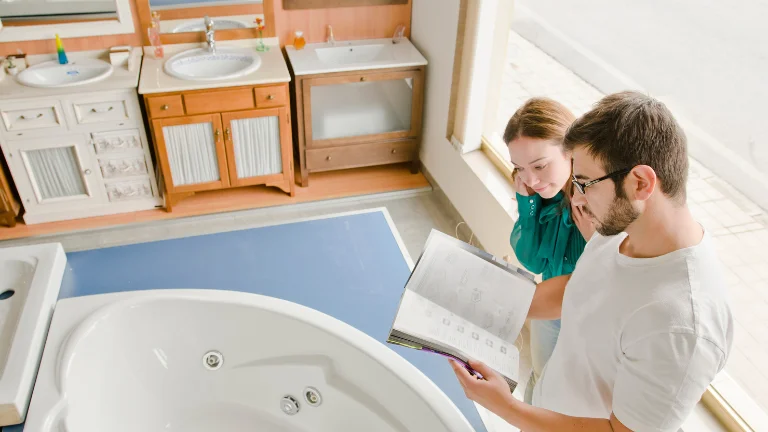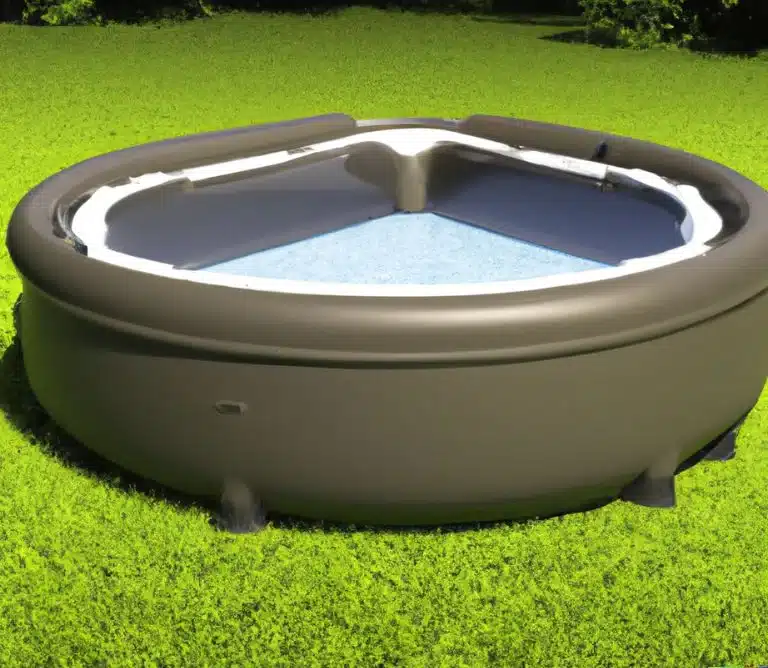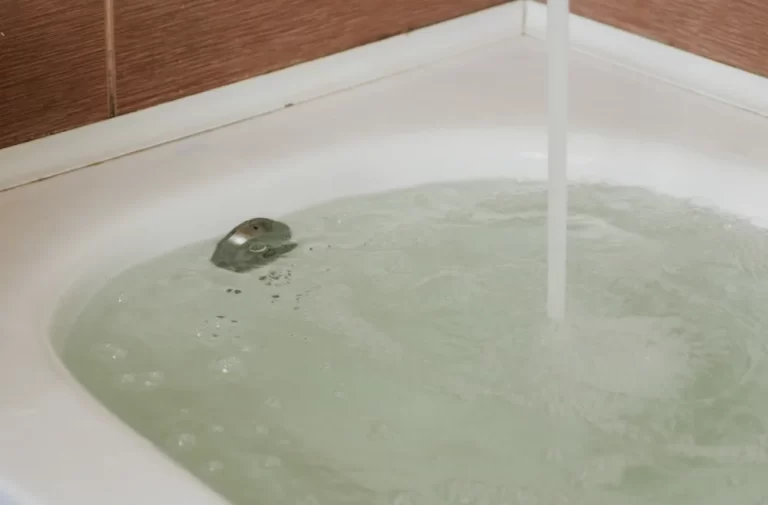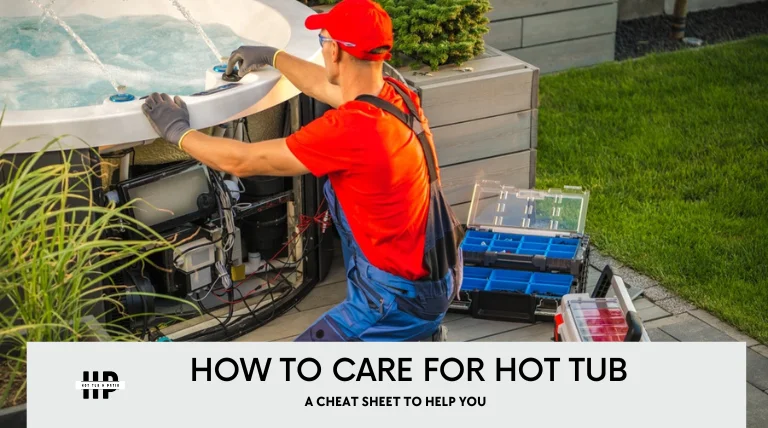Best Insulated Hot Tub
Insulated hot tubs are designed to retain heat more efficiently, especially in colder climates. Based on my experience helping hot tub owners find practical, energy-efficient solutions, the best insulated hot tubs are those with full-foam insulation and tight-fitting covers. These features really do make a difference, especially in colder areas.
Brands like Jacuzzi, Bullfrog, and Arctic Spas are commonly recognized for using these features, which can make a noticeable difference in operating costs over time.
I’ve seen how the right setup can cut energy bills and keep the water warm without constant reheating. My goal is to help you choose a hot tub that actually works for your climate and budget, not just what looks good on paper.
Insulated hot tubs are specifically designed to maintain water temperature for extended periods compared to traditional hot tubs.
Best Insulated Hot Tub
If you’re looking for a hot tub that holds heat well and helps cut energy bills, the Jacuzzi® J-LX Collection is one of the top choices. It’s built with full-foam insulation that wraps around the shell and plumbing, reducing heat loss and making it more efficient in all seasons. This kind of insulation helps maintain water temperature longer, so the heater doesn’t have to work as hard.
The J-LX also comes with a thick, energy-saving cover that fits tightly to lock in warmth when the tub’s not in use. From my experience working with hot tub owners in colder areas, this combination of full-foam insulation and a snug-fitting cover can make a noticeable difference in monthly electricity costs.
Beyond insulation, the J-LX hot tub features a customizable jet system that lets you focus massage pressure on sore spots like your back, legs, or shoulders. The layout is roomy too, making it a comfortable fit for families or small groups who want to soak together without feeling cramped.
Top Three Insulated Hot Tubs
If reducing energy bills and keeping things warm in tough winter climates is your priority, the Arctic Bear and Jacuzzi J‑475 both deliver strong insulation and real-world performance. The Bullfrog A6L is solid if you’re in a moderate climate and want a flexible massage setup, but be cautious if freezing conditions are common where you live.
1. Arctic Spas Bear
A rugged Canadian‑built tub with an innovative insulation system designed for extreme cold. It traps and reuses residual heat to keep things efficient.

Features
- HeatLock® perimeter insulation with rigid foam panels and airtight sealing.
- Self-supporting shell that allows internal pump‑heat transfer into the water and cabinet.
- Vacuum‑sealed insulated floor and premium Mylovac or Weathershield cover.
Pros
- Uses pump-generated heat to maintain water and internal components, even during power loss.
- Excellent cold-climate performance and low heating costs.
- Canadian/US manufacturing, built for harsh winters.
Cons
- Some users report inconsistent cabinet materials or difficult quoting/pricing practices (reddit.com)
- Travel costs or parts can be higher depending on location.
Reasons to buy
- If you live in a freezing climate and want longevity, low heat usage, and reliable freeze protection, the Bear’s system shines.
2. Jacuzzi J‑475
A spacious six‑person hot tub from Jacuzzi’s J‑400 series, combining full‑foam insulation and a smart energy system for a stable, efficient soak.

Features
- SmartSeal™ full‑foam insulation around shell, plumbing, and equipment.
- ProLast™ Extreme insulated cover and multi-layered insulation tested to exceed California energy standards by ~32 %.
- 55 PowerPro® jets, SmartTub™ remote control app, CLEARRAY Active Oxygen® water care, infrared/red‑light therapy, waterfall lighting, Bluetooth stereo.
Pros
- Excellent build quality, luxury finishes, wide array of hydrotherapy jets
- SmartTub app gives energy monitoring and remote control, useful for managing running costs
- Strong warranties (up to 10 years on shell) and premium filtration system.
Cons
- Lounger seat reduces space for others
- Some users note jet pressure could be stronger in comparison to similarly priced models.
Reasons to buy
- Ideal if you want a well‑insulated, smart‑enabled spa with plenty of therapeutic features and strong energy tracking.
3. Bullfrog A6L
A well‑insulated model in Bullfrog’s A‑series line, designed with R‑16 insulation and modular JetPaks for customizable massage and efficiency.

Features:
- R‑16 rated insulation, tightly sealed cover and cabinet design
- Compact plumbing via JetPak system minimizes heat loss points
Pros
- Modular seating allows custom jet configurations per user.
- Clean internal layout simplifies servicing and reduces plumbing heat loss.
Cons
- Several Reddit users report poor cold‑climate heat retention; temperature drops quickly during use and high electric bills in winter.
- Not ideal for freezing weather; heater may struggle to keep up.
Reasons to buy
- A good fit in milder climates if you prioritize customization and easy maintenance, but maybe not the best for cold winters.
Quick comparison table:
| Model | Best For | Insulation Style | Heat Performance |
|---|---|---|---|
| Arctic Bear | Harsh winters | Perimeter HeatLock® + foam | Excellent, freeze‑proof |
| Jacuzzi J‑475 | Luxury and hydrotherapy | Full‑foam SmartSeal™ | Very efficient, app‑monitored |
| Bullfrog A6L | Custom jet configuration | R‑16 insulation + sealed design | Moderate, struggles in freezing temps |
If you’re aiming for energy efficiency without sacrificing comfort, this model is worth a closer look.
Factors to Consider When Choosing an Insulated Hot Tub
Insulation isn’t just a luxury add-on, it plays a big role in how efficiently your hot tub runs, how much it costs to operate, and how well it holds up over time, especially in colder climates.
So if you’re shopping for a hot tub or upgrading an existing one, here are the key things you should think about.
🧭 Key Decision Factors
| Factor | What to Look For |
|---|---|
| Climate | Cold climate = Full-foam or perimeter insulation Mild = Basic fiberglass OK |
| Usage | Frequent use = Better heat retention needed Occasional = Good cover matters |
| Budget | Fiberglass is cheaper upfront Foam costs more but saves in energy over time |
🔍 What to Consider
1. Climate
- Colder regions require thicker or more advanced insulation to prevent freezing and reduce energy loss.
- Milder climates may not need full-foam insulation but can still benefit from a basic thermal barrier.
Tip: If you’re in a freeze-prone area, full-foam is usually worth the extra cost.
2. How Often You Use It
- Frequent use: Go for insulation that keeps water warm between sessions to avoid constant reheating.
- Occasional use: Prioritize good cover insulation and standby energy efficiency.
3. Your Budget
- Insulation varies in price depending on the material and method.
- Don’t just think about upfront cost—consider how much you’ll save in monthly energy bills too.
🧱 Common Shell Materials
| Material | Highlights |
|---|---|
| Fiberglass | Strong and heat-resistant, but can wear out faster if not insulated well. |
| Acrylic | Durable, easy to clean, and resists scratches. Slightly cheaper than fiberglass. |
🧊 Types of Hot Tub Insulation
| Insulation Type | How It Works | Ideal For |
|---|---|---|
| Fiberglass Batting | Air gets trapped in tiny fibers to create a thermal barrier. | Budget installs or mild climates. |
| Full-Foam (Polyurethane) | Dense foam fills the entire cabinet, sealing in heat and reducing noise. | Cold climates or heavy usage. |
✅ Pros and Cons Breakdown
| Shell Type | Insulation Type | Pros | Cons |
|---|---|---|---|
| Fiberglass | Fiberglass Batting | – Inexpensive – Easy to install – Lightweight | – Less durable – Shorter lifespan – Fire hazard if poorly installed |
| Fiberglass | Full Foam | – Very efficient – Durable and long-lasting – Reduces noise | – More expensive – Harder to repair or service plumbing |
| Acrylic | Fiberglass Batting | – Affordable – Scratch-resistant – Easy to clean | – Not ideal for very cold climates – Requires regular maintenance |
| Acrylic | Full Foam | – Excellent heat retention – Quiet operation – Long lifespan | – Higher upfront cost – May trap moisture if poorly installed |
🛠️ Pro Tip from Experience
Many hot tub owners underestimate the role of insulation until they get that first winter energy bill. Based on helping dozens of customers, I can say that investing in quality foam insulation pays off over time, especially if you use your tub often or live somewhere with harsh winters.
Also, always check for a well-insulated cover, even the best internal insulation won’t help if heat escapes from the top.
Insider Tip
From my experience working with hot tub owners, full-foam insulation combined with a high-quality cover saves more in the long run, even if it costs more upfront. Especially true if you live where winters get rough.
Other Things to Consider:
Size:
- The hot tub size is an essential factor to consider as it determines the number of people it can accommodate.
- Choose a size that fits your outdoor space and accommodates the number of people you want to use the hot tub with.
- Consider the hot tub’s height, width, and length to ensure that it fits the space you have designated for it.
Capacity:
- The hot tub’s capacity refers to the number of people it can hold at one time.
- This is usually measured in gallons or liters and depends on the hot tub size.
- Consider the number of people who will be using the hot tub regularly and choose a size that accommodates everyone comfortably.
Insulation:
- Insulation is an essential factor to consider when choosing the best insulated hot tub.
- Insulated hot tubs retain heat better and use less energy to maintain a consistent temperature.
- Look for hot tubs with high-density foam insulation and an excellent seal to ensure maximum heat retention.
Energy Efficiency:
- Energy efficiency is an essential factor to consider when choosing an insulated hot tub.
- Look for hot tubs with energy-efficient features such as advanced filtration systems, low-energy pumps, and energy-saving modes.
- This will help you save on energy costs and reduce your carbon footprint.
Price:
- Price is another crucial factor when choosing the best insulated hot tub.
- Set a budget and look for hot tubs that fit within your budget while still offering the features and benefits you are looking for.
- Remember that you get what you pay for, so invest in a high-quality insulated hot tub that will last for years.

Insulated hot tubs are beneficial
They are beneficial because they help to keep the water at a consistent temperature. They also help to conserve energy by preventing heat from escaping. In addition, insulation can help to reduce noise levels.
They are made from durable materials that will last for many years. They are made from durable materials that will last for many years. Insulated can be used in any climate and in any season. They are designed to keep water warm, even during cold weather.
These tubs also help to prevent the water from freezing. They are made from materials that help keep the heat in, even during cold weather. They can be used all year round.
Different types of insulation
There are three main types of insulation used in it: fiberglass, polyurethane foam, and closed-cell spray foam.
Each type has its advantages and disadvantages.
- Fiberglass is the most common type of insulation used in hot tubs. It is inexpensive and does a good job of insulating the tub. However, it is not as durable as other types of insulation and can be damaged by water.
- Polyurethane foam is more expensive than fiberglass, but it is more durable and does a better job of insulating the tub. It can also be damaged by water, but not as easily as fiberglass.
- Closed-cell spray foam is the most expensive type of insulation, but it is also the most durable and does an excellent job of insulating the tub.
We recommend you use closed-cell spray foam because it is the best at insulating your hot tub.
However, if cost is a concern, fiberglass insulation will do an adequate job as long as you take care to clean up water that spills on the insulation. Related: A Cheat Sheet to Help You How to Care for Hot Tub

The benefits of insulation
Good insulation will help to retain heat, saving you money on your energy bills. It will also make the water in your hot tub feel more comfortable, as it won’t be constantly losing heat to the outside air.
Insulation is especially important if you live in a colder climate, as it will help to prevent your pipes from freezing in the winter.
- An insulated spa can save you money on your energy bills.
- It can also help to keep the water in it hotter for longer periods of time. which can save you money on your energy bills.
- Insulation can also provide some soundproofing for it, which can be beneficial if you live in a noisy area. making it more relaxing to use your hot tub.
- It is a good idea to use insulation if you have an above-ground or in-ground.
- By keeping the heat in, insulation can also help to extend the life of your hot tub by preventing parts from overworking.
- You should also consider the type of insulation that you want to use. Insulation comes in a wide variety of materials.
- Some types of insulation are made for hot tub use. You can choose from natural or synthetic fibers, foam, mineral wool, and water-resistant fabrics.
Shop quality hot tub shells to complete your dream spa installation. With our selection, you can make your backyard the perfect oasis for relaxation.

Multi-Density and Multi-Layered Insulation
As the weather gets colder, you may be thinking about ways to insulate it. There are many different options on the market, but what is the best way to insulate your hot tub?
One option is multi-density and multi-layered insulation. This type of insulation is made up of multiple layers of different materials, which makes it more effective at retaining heat. It also has a higher R-value, which means it will keep it warmer for longer.
Another benefit of this type of insulation is that it is less likely to settle over time. This means that you won’t have to constantly readjust or replace the insulation in your hot tub.
If you’re looking for an effective way to insulate it, multi-density and multi-layered hot tub insulation is a great option.
Related: WHAT IS THE BEST HOT TUB FOR COLD CLIMATES
🔍 Want more info? Head over to Hot Tub Patio 🛁 or check our Guides 📖 for extra reading!











